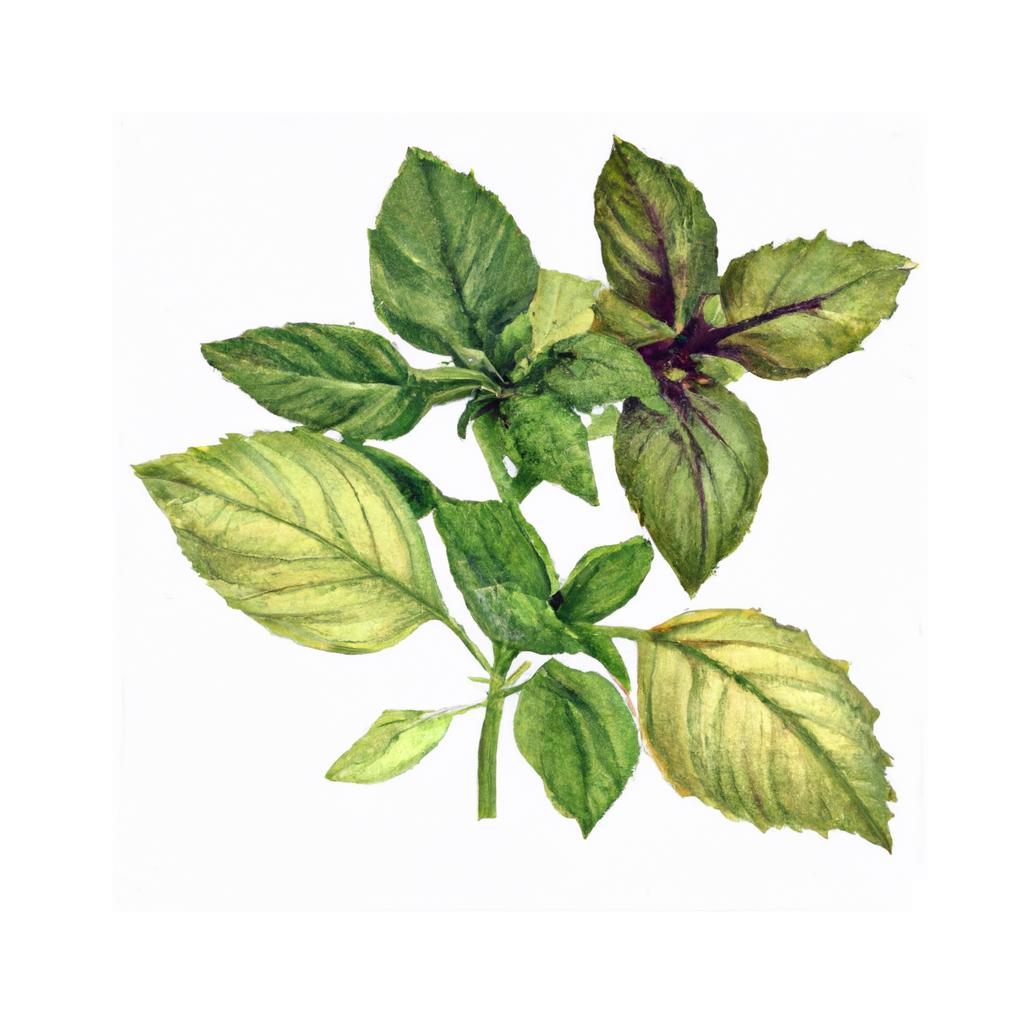
Basil is a fragrant, leafy green herb that is native to tropical regions from central Africa to Southeast Asia. It is a member of the mint family (Lamiaceae) and comes in several varieties such as sweet basil (most commonly used for culinary purposes), Thai basil, lemon basil, and holy basil. Its botanical name is Ocimum basilicum, which means 'king' or 'royal' in Greek, signifying the importance of this herb in ancient cultures.
Historically, basil has been utilized for both its medicinal and culinary properties. It was believed to have healing powers, especially for digestive issues, and was considered sacred in some cultures like Hinduism. Ancient Egyptians used basil in the embalming process, while the Greeks and Romans used it as a symbol of love and fertility.
In the culinary world, basil is undoubtedly most famous for its role in Italian cuisine. It is the main ingredient in pesto, a delicious sauce made from crushed basil leaves, garlic, pine nuts, Parmesan cheese, and olive oil. Basil also pairs well with tomatoes, making it a perfect addition to fresh salads, pasta sauces, and pizzas. In addition, Thai and Vietnamese cuisines incorporate basil for its unique flavor profile, often using it in stir-fries and curries.
Growing basil in your garden is relatively easy; it thrives in well-draining soil with consistent moisture, and full sun exposure. Make sure to pinch off flowers, as allowing the plant to flower will reduce the production of leaves. Harvest the leaves throughout the growing season to encourage bushier growth.
This is advice is most applicable to growers in the UK, you may need to adjust the timings if you live somewhere with a different climate and/or seasons.
| Month | Tasks | Advice |
|---|---|---|
| January | sow indoors, | Sow basil seeds indoors in a well-draining seed compost. Keep the soil moist and maintain a temperature of around 15-20°C. |
| February | sow indoors, | Continue sowing basil seeds indoors, monitoring temperature and moisture levels to ensure good germination. |
| March | sow indoors, | Sow basil seeds indoors if you haven't already. Begin to harden off indoor-sown plants by exposing them to outdoor conditions for a few hours each day. |
| April | plant out, sow outdoors, | Transplant indoor-sown basil plants into a sunny spot with well-draining soil. You can also start sowing basil seeds directly outdoors in a prepared bed. |
| May | plant out, sow outdoors, | Plant out any remaining indoor-sown basil plants, or sow basil seeds directly outdoors. Ensure plants receive enough sunlight and water moderately. |
| June | harvest, | Begin harvesting basil leaves as needed, but avoid taking more than one-third of the plant at a time. This encourages bushy growth and prevents weakening the plant. |
| July | harvest, | Continue to harvest basil leaves regularly, ensuring not to over-pick. Pinch off any flowers that appear to promote lush foliage growth. |
| August | harvest, | Harvest basil leaves as needed, taking care not to weaken the plant by over-picking. Remove any flowers to encourage more leaf growth. |
| September | harvest, | Continue harvesting basil leaves until the first frost, remembering to remove any flowers that might appear on the plant. |
| October | - | - |
| November | - | - |
| December | - | - |